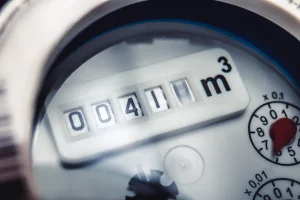From the very first time humans settled in one place and began to grow crops, we have had to find ways of bringing water to us. Previously, in times of water scarcity, nomadic people were able to move to wherever the water was. But as soon as we began to build farms and settlements, it became necessary to find different ways of fulfilling our water needs. And that meant bringing the water to wherever we were. There’s evidence that water cisterns were developed in the Neolithic age – around 5,500 years ago.
However, it wasn’t until the Ancient Romans conquered the western world with their own brand of civilisation that water engineering was taken up a notch.
What have the Romans ever done for us?
When you think about the historical use of water, the Romans will probably spring to mind first and foremost. And quite rightly so. They built complex water and sewerage systems that were exceptionally efficient and recognisably the basis on which modern systems are created.
Magnificent aqueducts
The Roman aqueducts were amazing features of engineering. We don’t even have to imagine what they looked like – they were so well built some are still around today. The aqueducts brought fresh water into the cities where it was distributed via a complex system of pipes and channels. Roman leaders wanted water not only for public drinking fountains and to use for the famous baths, but also for the public fountains that proved a city’s grandeur and importance. In fact, aqueducts were a status symbol in their own right. In the second century CE, the Emperor Trajan built the 25-mile-long Aqua Traiana, which brought millions of litres of water into Rome to feed his two vanity projects – the Baths of Trajan, and the Naumachia of Trajan, which was a large basin surrounded by seating where audiences could watch staged naval battles.
Prioritised water supply
When we have water shortages, a domestic hosepipe ban will be issued and it’ll be up to us to obey the rules. However, this means that people can break the rules and continue to use their hosepipes, depleting supplies. The Romans engineered their water supply delivery so it was impossible for homes to sneakily take water when it was in short supply. This was possible because of the way the outlets from the main water channels were built. Wealthy Romans could afford to divert clean water from the public system directly into their homes. That meant they had their own supply and did not have to send their slaves and servants out to collect water from the public fountains. The outlets to domestic premises were built higher in the channels than the outlets to business users. When water was plentiful, water levels were high enough in the channels to reach up to the domestic outlets. If water levels dropped, water simply would not reach the domestic outlets, which meant that supplies were automatically cut off to homes. However, the public fountains still had water and businesses could continue trading.
Greywater recycling
We all know how clean the Romans liked to be, but they also knew how to recycle their bath water (what we now call greywater). They engineered sewerage systems that utilised the wastewater from the bath houses. Roman toilets were simple affairs – long planks of wood or stone with holes in them placed over a sewerage channel. The wastewater from the baths was sent down the channels underneath the toilets, washing waste into the sewers and away from populated areas.
Although the Romans deserve recognition for their water innovations, there are plenty of other examples throughout history that need to be celebrated.
Water pumps
The idea of suction pumps that used the force of a vacuum to draw water from a well was first suggested by Galileo in the early 17th century. This idea was developed by Evangelista Torricelli, an Italian mathematician and physicist who proved that the weight in the atmosphere has the ability to push down on the surface of the water – the device he used to demonstrate this became known as the barometer.
The suction pump was later used on the grandest scale at the Palace of Versailles in France. Louis XIV – also known as the Sun King – wanted to impress the world with lavish fountains in his brand-new palace, but the terrain was not compatible with gravity-fed water. He therefore spent a fortune developing water pumps that transported the water to a reservoir at the top of a hill, where the forces of gravity would ensure the fountains put on a good show. A total of 14 huge water wheels pumped water from the River Seine at the same time as working more than 250 piston pumps that took 5,000 cubic metres of water to a reservoir 162 metres above the river. The water was then distributed to the fountains via aqueducts and pipes. The system needed a workforce of 60 to keep it running. The cost of building the pumps was a third of the total cost of the entire Palace.
History is full of impressive and innovative ways of using water. With modern technological advances and innovations, it’s exciting to think about what might happen next.



